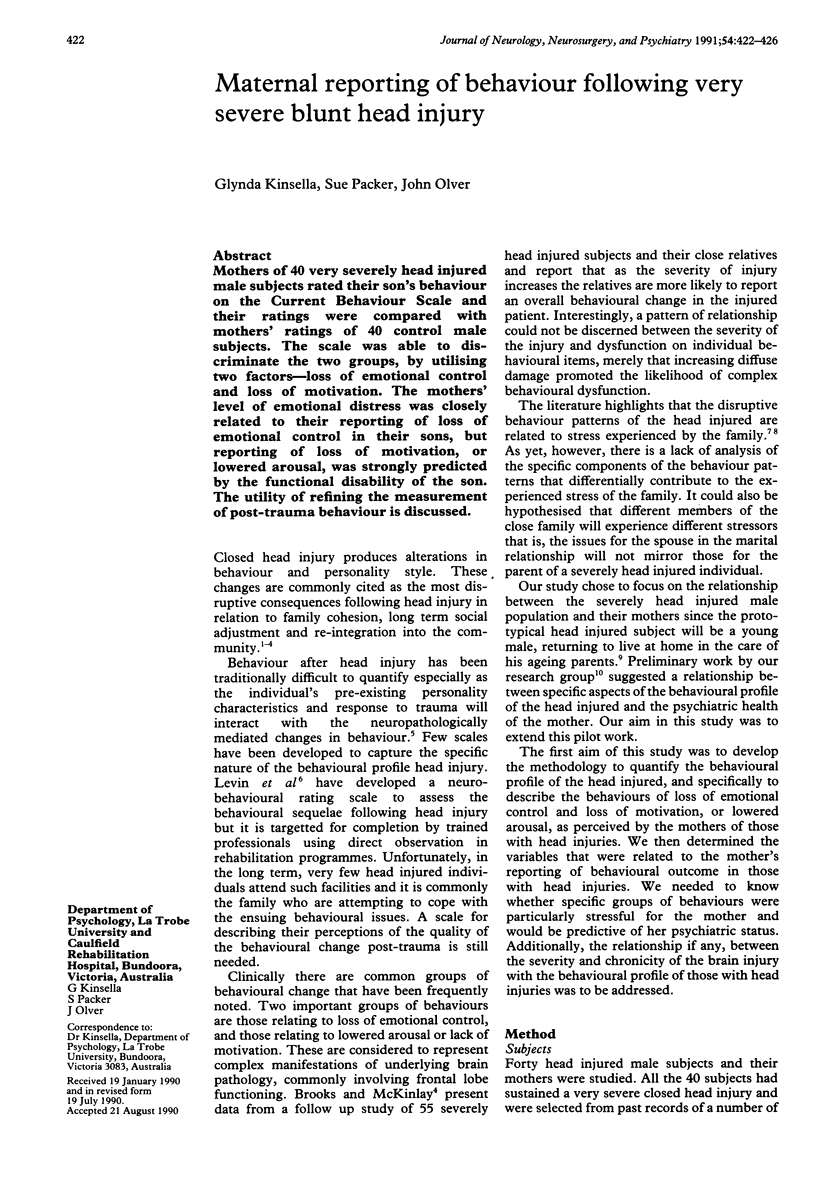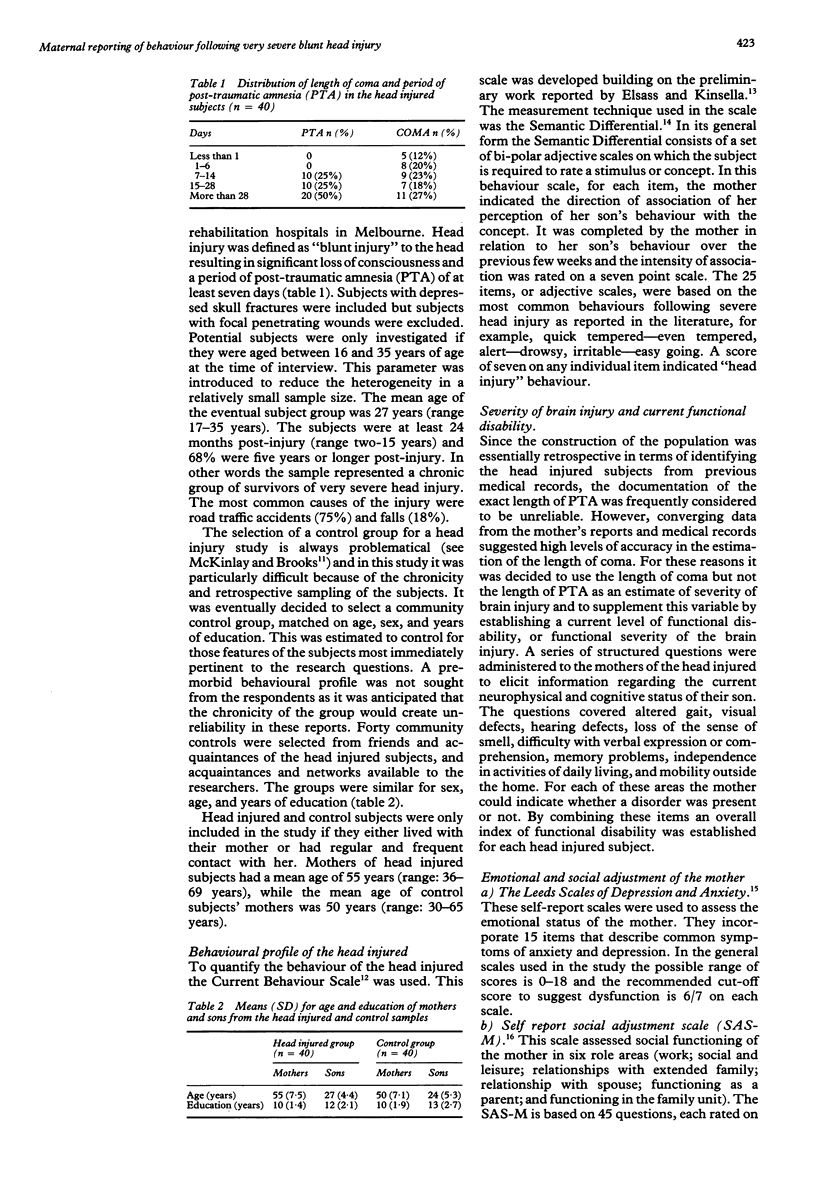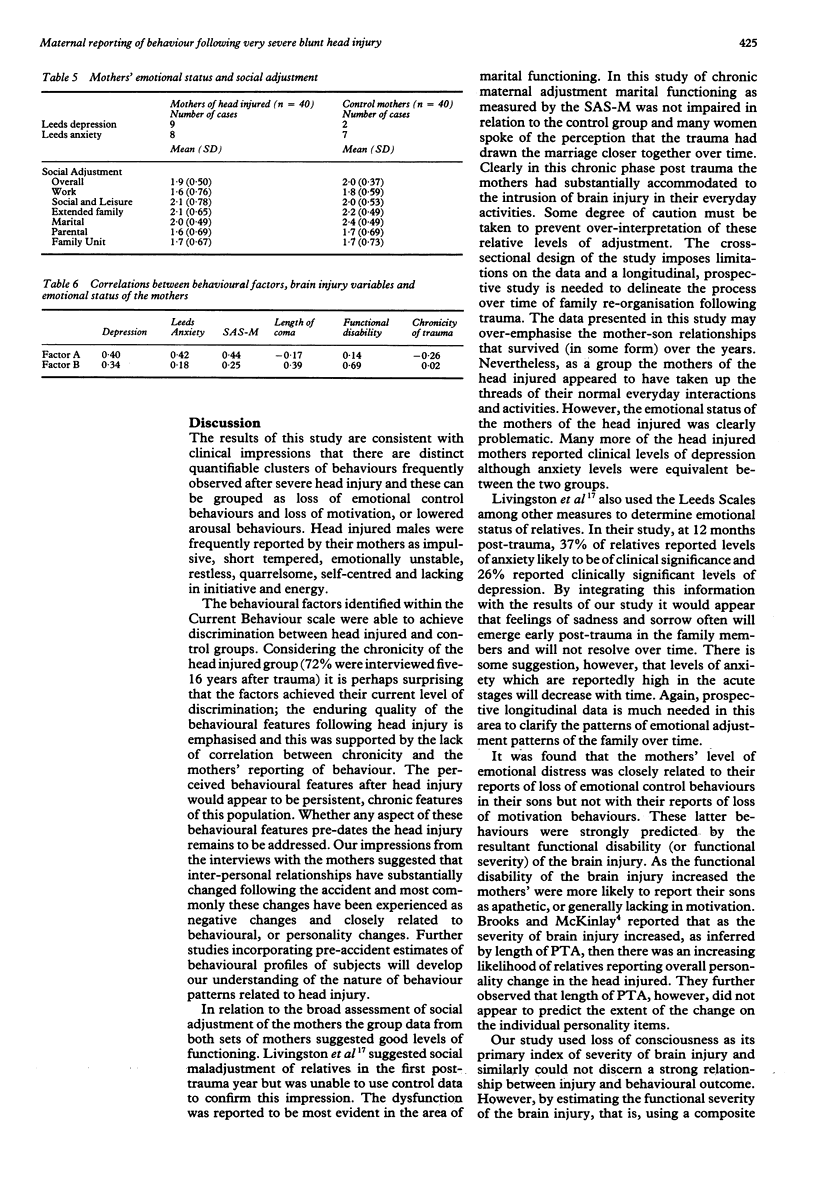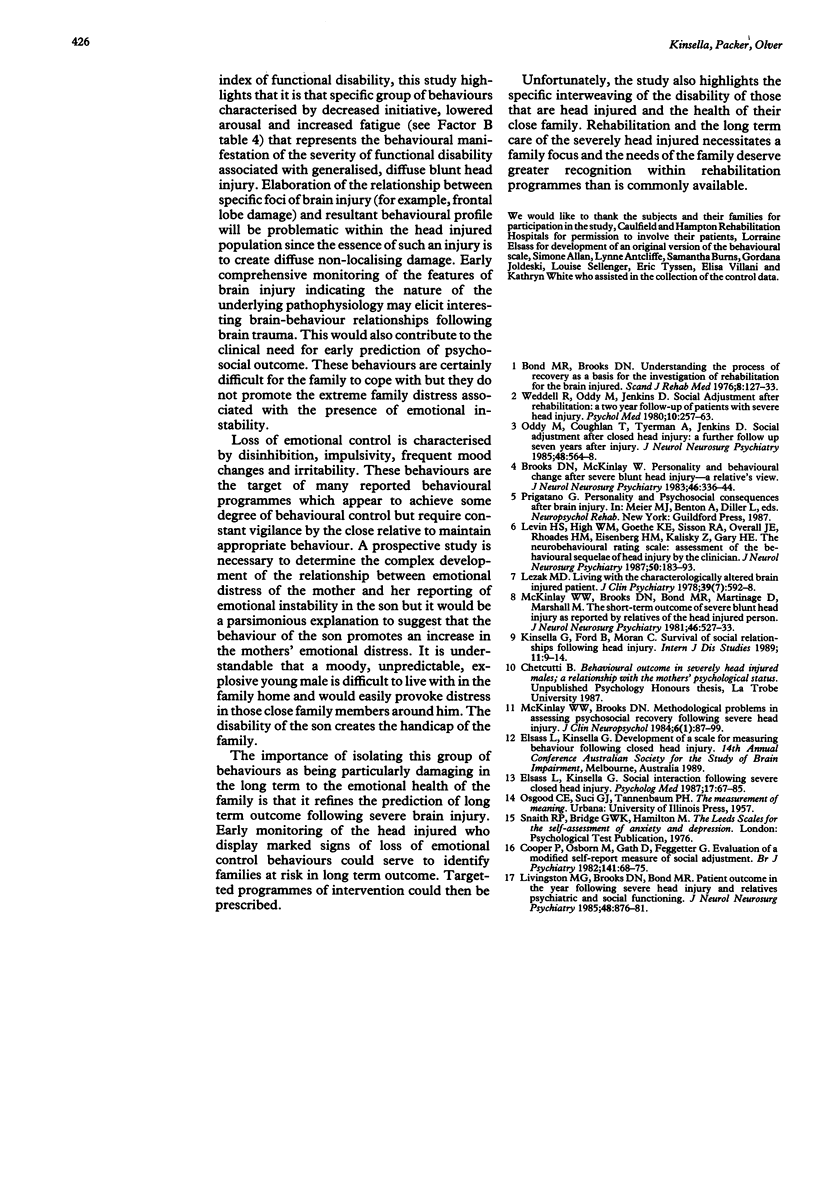Abstract
Mothers of 40 very severely head injured male subjects rated their son's behaviour on the Current Behaviour Scale and their ratings were compared with mothers' ratings of 40 control male subjects. The scale was able to discriminate the two groups, by utilising two factors--loss of emotional control and loss of motivation. The mothers' level of emotional distress was closely related to their reporting of loss of emotional control in their sons, but reporting of loss of motivation, or lowered arousal, was strongly predicted by the functional disability of the son. The utility of refining the measurement of post-trauma behaviour is discussed.
Full text
PDF




Selected References
These references are in PubMed. This may not be the complete list of references from this article.
- Brooks D. N., McKinlay W. Personality and behavioural change after severe blunt head injury--a relative's view. J Neurol Neurosurg Psychiatry. 1983 Apr;46(4):336–344. doi: 10.1136/jnnp.46.4.336. [DOI] [PMC free article] [PubMed] [Google Scholar]
- Cooper P., Osborn M., Gath D., Feggetter G. Evaluation of a modified self-report measure of social adjustment. Br J Psychiatry. 1982 Jul;141:68–75. doi: 10.1192/bjp.141.1.68. [DOI] [PubMed] [Google Scholar]
- Elsass L., Kinsella G. Social interaction following severe closed head injury. Psychol Med. 1987 Feb;17(1):67–78. doi: 10.1017/s003329170001299x. [DOI] [PubMed] [Google Scholar]
- Kinsella G., Ford B., Moran C. Survival of social relationships following head injury. Int Disabil Stud. 1989 Jan-Mar;11(1):9–14. doi: 10.3109/02599148909166369. [DOI] [PubMed] [Google Scholar]
- Levin H. S., High W. M., Goethe K. E., Sisson R. A., Overall J. E., Rhoades H. M., Eisenberg H. M., Kalisky Z., Gary H. E. The neurobehavioural rating scale: assessment of the behavioural sequelae of head injury by the clinician. J Neurol Neurosurg Psychiatry. 1987 Feb;50(2):183–193. doi: 10.1136/jnnp.50.2.183. [DOI] [PMC free article] [PubMed] [Google Scholar]
- Lezak M. D. Living with the characterologically altered brain injured patient. J Clin Psychiatry. 1978 Jul;39(7):592–598. [PubMed] [Google Scholar]
- Livingston M. G., Brooks D. N., Bond M. R. Patient outcome in the year following severe head injury and relatives' psychiatric and social functioning. J Neurol Neurosurg Psychiatry. 1985 Sep;48(9):876–881. doi: 10.1136/jnnp.48.9.876. [DOI] [PMC free article] [PubMed] [Google Scholar]
- McKinlay W. W., Brooks D. N., Bond M. R., Martinage D. P., Marshall M. M. The short-term outcome of severe blunt head injury as reported by relatives of the injured persons. J Neurol Neurosurg Psychiatry. 1981 Jun;44(6):527–533. doi: 10.1136/jnnp.44.6.527. [DOI] [PMC free article] [PubMed] [Google Scholar]
- McKinlay W. W., Brooks D. N. Methodological problems in assessing psychosocial recovery following severe head injury. J Clin Neuropsychol. 1984 Feb;6(1):87–99. doi: 10.1080/01688638408401199. [DOI] [PubMed] [Google Scholar]
- Oddy M., Coughlan T., Tyerman A., Jenkins D. Social adjustment after closed head injury: a further follow-up seven years after injury. J Neurol Neurosurg Psychiatry. 1985 Jun;48(6):564–568. doi: 10.1136/jnnp.48.6.564. [DOI] [PMC free article] [PubMed] [Google Scholar]
- Weddell R., Oddy M., Jenkins D. Social adjustment after rehabilitation: a two year follow-up of patients with severe head injury. Psychol Med. 1980 May;10(2):257–263. doi: 10.1017/s0033291700044019. [DOI] [PubMed] [Google Scholar]


